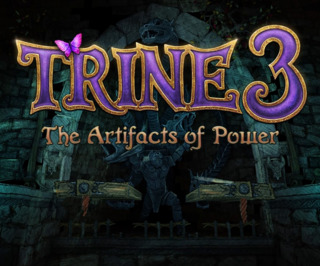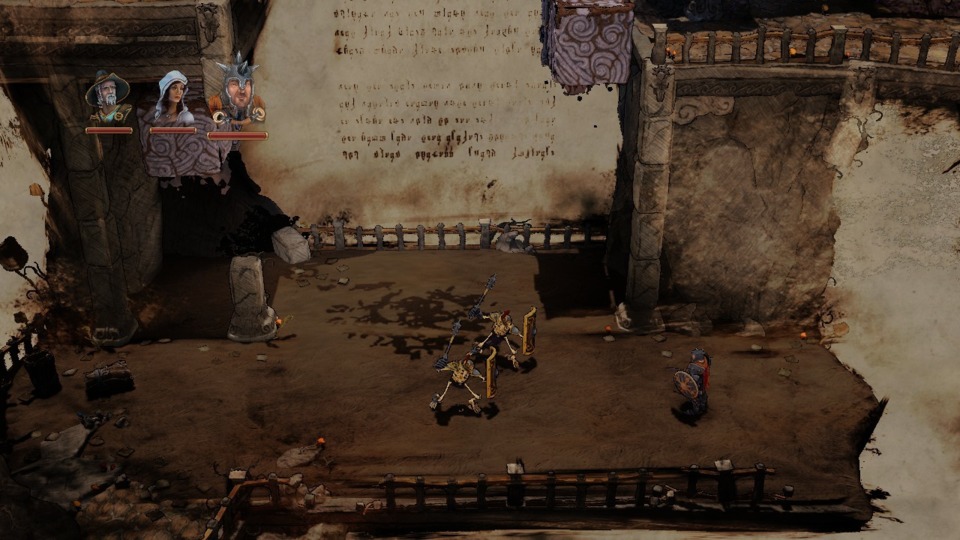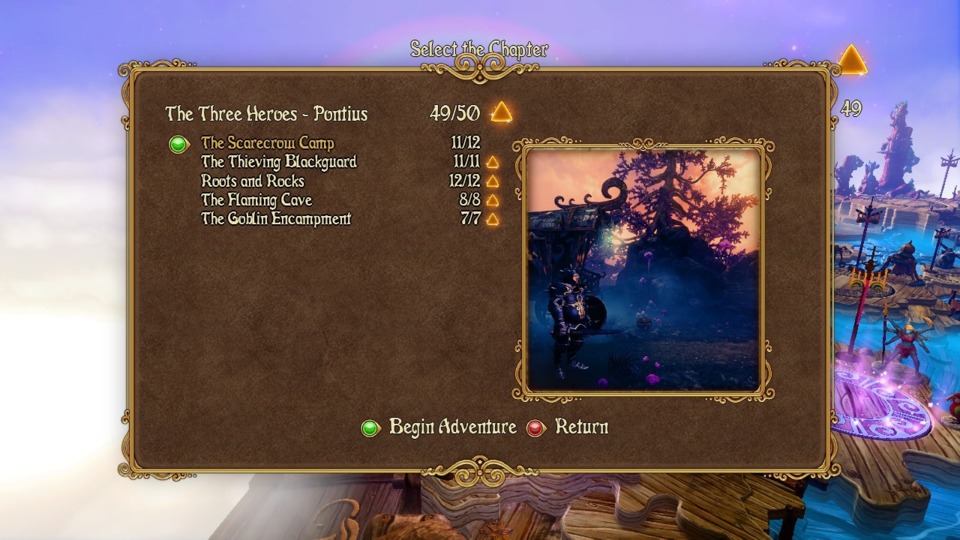Indie Game of the Week 63: Trine 3: The Artifacts of Power
By Mento 0 Comments

I knew it wouldn't be too long before I found myself back in the bloom-drenched world of Frozenbyte's Trine, having completed the first two episodes of its little trilogy relatively recently (Trine: Enchanted Edition was part of 2016's May Mastery feature, while Trine 2 was the 33rd Indie Game of the Week) and eager to see how it concluded. Trine 3: The Artifacts of Power's big advancement was a fully 3D world for the trio of soul-bound adventurers - Amadeus, the box-summoning and overly cautious wizard; Zoya, the unscrupulous and acrobatic jewel thief; and Pontius, the stout-hearted and stout-physiqued warrior - to explore, with more puzzles and combat sequences that would take advantage of the extra dimension.
What became evident fairly quickly, and more overtly towards the end of Trine 3, is that the devs perhaps bit off more than they could chew with this whole new 3D paradigm. There are multiple instances where it feels like the game was rushed, or some features were scaled back due to a time/resource crunch, or that the devs ran out of ways to integrate the puzzles they had imagined into the framework of the story levels they had conceived. The most obvious exhibit of this is how the game just abruptly ends in the middle of the adventure; literally just after the trio find the first piece of a multi-part artifact they need to assemble to take on their new antagonist. There's a persistent thread of this incompleteness throughout the adventure, as the game frequently lapsed into its old familiar 2D creature comforts for puzzle set-ups which had the effect of making the game's "3D-ness" feel more like Crash Bandicoot in practice. In addition to the small number of main story missions - including the requisite intro where you control all three heroes independently to learn how they work before they are once again joined together - there are even smaller "challenge" levels scattered around the game's map screen (which resembles this neat giant carved contoured map, like the one in the Game of Thrones intro) which present little optional puzzle and combat challenges for the heroes. There is a sense, though, that these mini-levels might've been part of normal-sized ones had the devs enough time to put more of the game together.

The biggest disappointment is how much the levelling has been scaled back. In older Trine games, you spent the collectibles you found in each level on upgrades for your characters. For example, Amadeus could summon more boxes simultaneously for more elaborate stacking solutions, or Zoya could shoot fire arrows which would ignite certain objects. This gave the games a bit of a spacewhipper vibe, as certain collectibles became easier to grab once you had the right upgrades. Trine 3 has no upgrades, and all three characters have all the skills they'll ever have from the offset: Amadeus and his single box, Zoya and her rope arrows, and Pontius with his shield charge and float. Some of these skills had to be acquired before, but are simply part of their respective initial repertoires here, and the lack of power-ups limits the puzzle variety seeing as you no longer have a wide array of abilities with which to tackle them. Collectibles instead are now used to unlock new stages, which means they're a little more compulsory than they previously were.
Most of what appeals about Trine is still accounted for here, from the wonderful graphics and snappy repartee between the reluctant heroes to the amount of slack and flexibility afforded to the player and their approach to the puzzles, and the times where the game actually embraces its new dimension - beyond basic enemy arenas - lead to some clever three-dimensional puzzles. There's a few new quality-of-life perks that I appreciated also, such as the way the game tracks a stage's collectibles by checkpoint, making it far easier to backtrack for the one or two you may have missed. Death has been made far more tenable also, as the deceased souls of lost characters float to a designated point in the vicinity and can be resurrected if the player waits there long enough: this makes bosses in particular a lot easier to manage. One odd quirk of this new death system is that characters will occasionally float past the current obstacle, which means you need to complete whatever sequence defeated you in order to get the character back - and it's often the case that you could only solve that hazard with that character. I didn't get stuck myself, and there's a simple "restart at last checkpoint" button if I did, but it did seem like an unusual oversight.

Ironically, the jump to 3D has robbed Trine of a lot of its former depth. I feel for Frozenbyte and its team, who clearly couldn't get their vision of what they wanted for Trine 3 together with the budget and timeframe they had, and it's a bummer that the resulting game is far too short and evidently incomplete. It feels like the Sonic 3 of the Trine franchise: a shell of a game with a lot of promise that might need a "part two" before it truly becomes what it was always meant to be.
Rating: 4 out of 5.
| < Back to 62: Yomawari: Night Alone | > Forward to 64: Infinifactory |
